Google announces $230 Fitbit Ace LTE for kids with Wear OS
The Fitbit Ace LTE is Google’s latest Wear OS device and is designed to encourage kids (ages 7+) to be healthy through games while also serving as a real-time parent-child communication and location device. Mobile connectivity, Fitbit Arcade and other features require a monthly or annual Fitbit Ace Pass subscription.
Hands on: The Fitbit Ace LTE is Google’s most complete launch in years [Gallery]
Design + hardware
Visually, the Ace LTE looks like the Sense 2 or Versa 4 with a rounded square OLED (333 PPI) protected by Gorilla Glass 3. In the box you get a raised plastic bumper that clips on to further protect the screen. The housing is also made of stainless steel and recycled plastic.
Battery life is rated at over 16 hours (328 mAh typical) with a standalone LTE connection and plenty of gaming included, but no always-on display. AOD can be enabled in the Settings app, which is identical to Wear OS. However, there is no Play Store, third-party apps, or advertising.
Typical usage is based on a school day with 6 5-minute gaming sessions, 10 messages, 3 one-minute voice calls, 5 location checks, 2 payments and 4 hours with Wi-Fi.
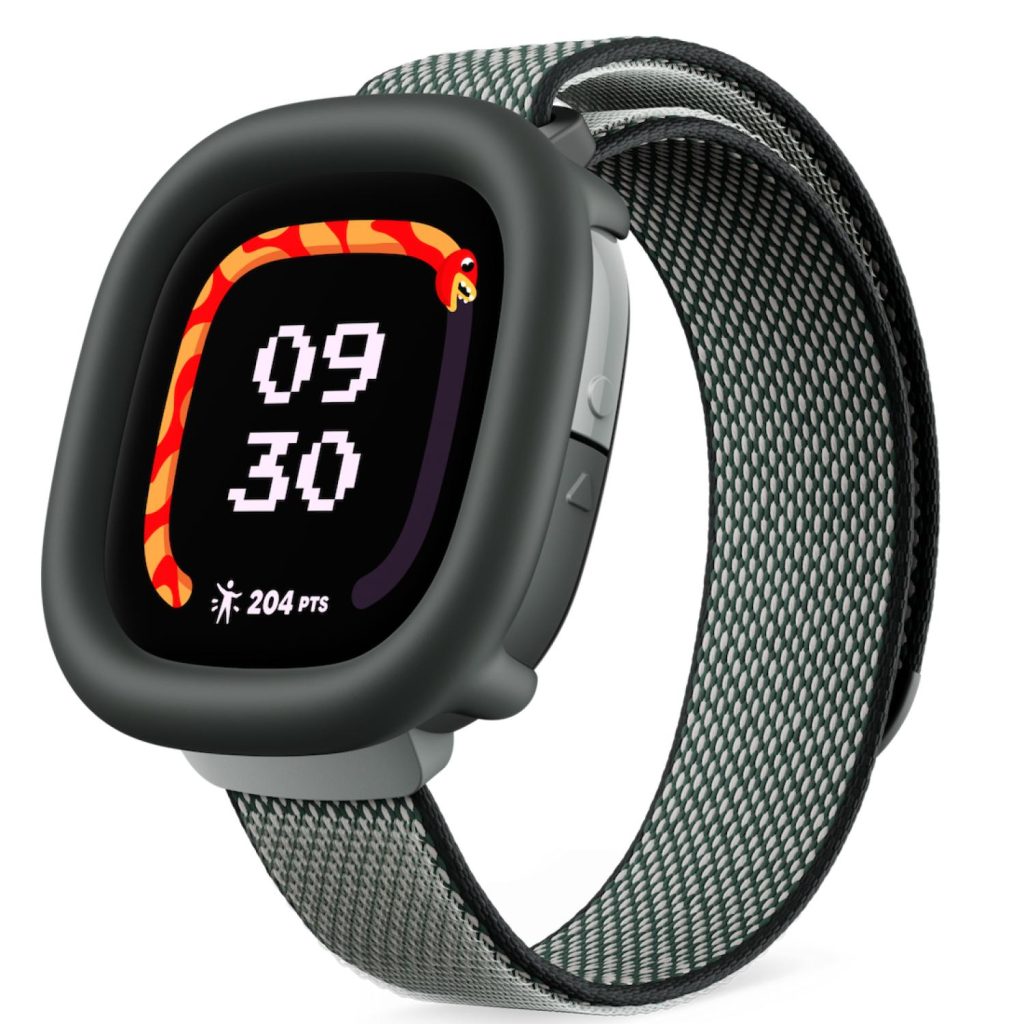
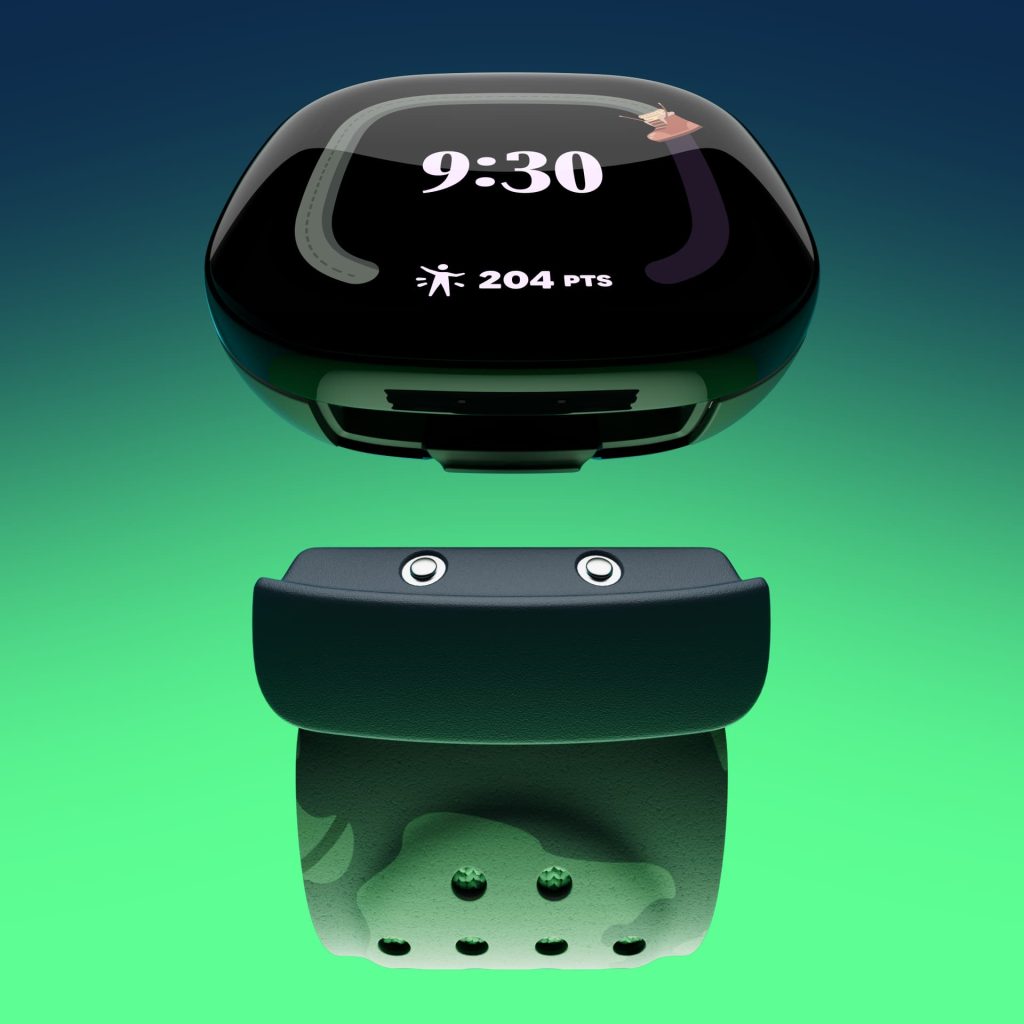
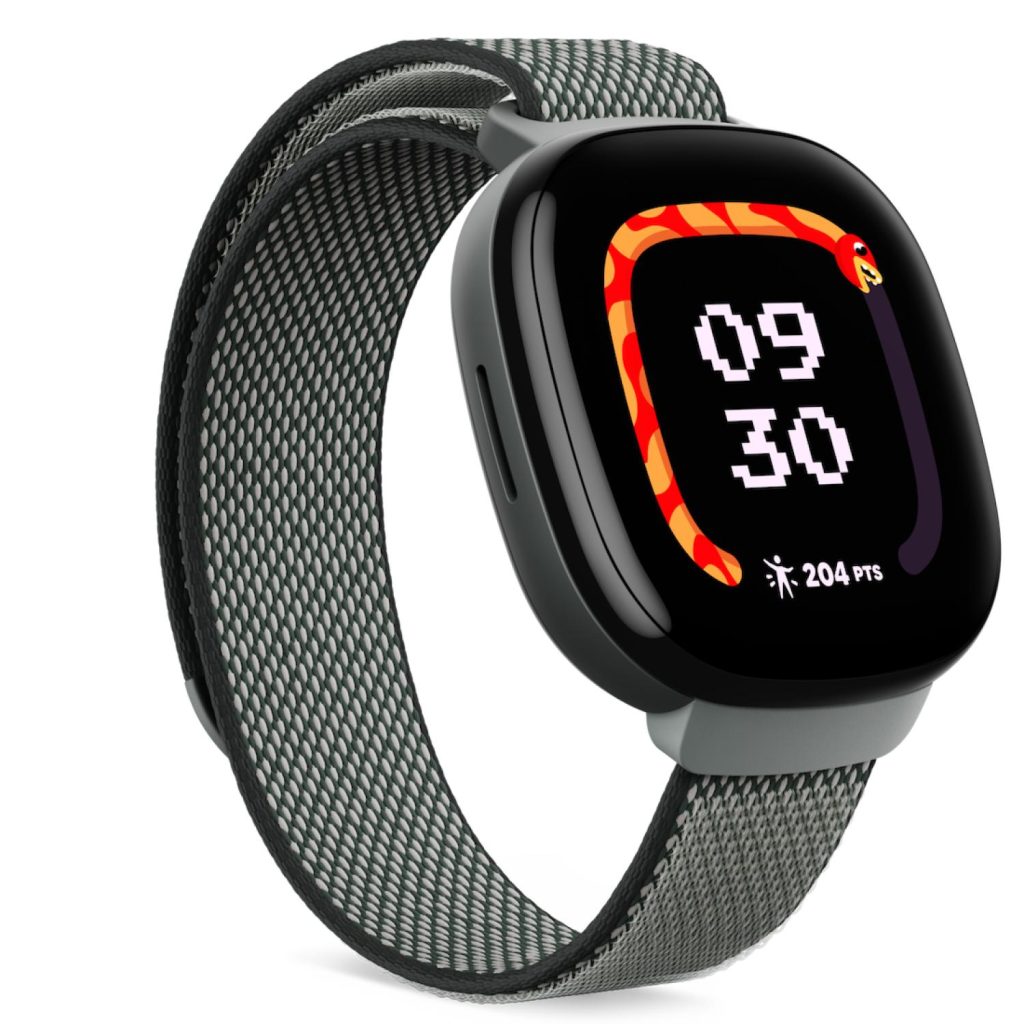
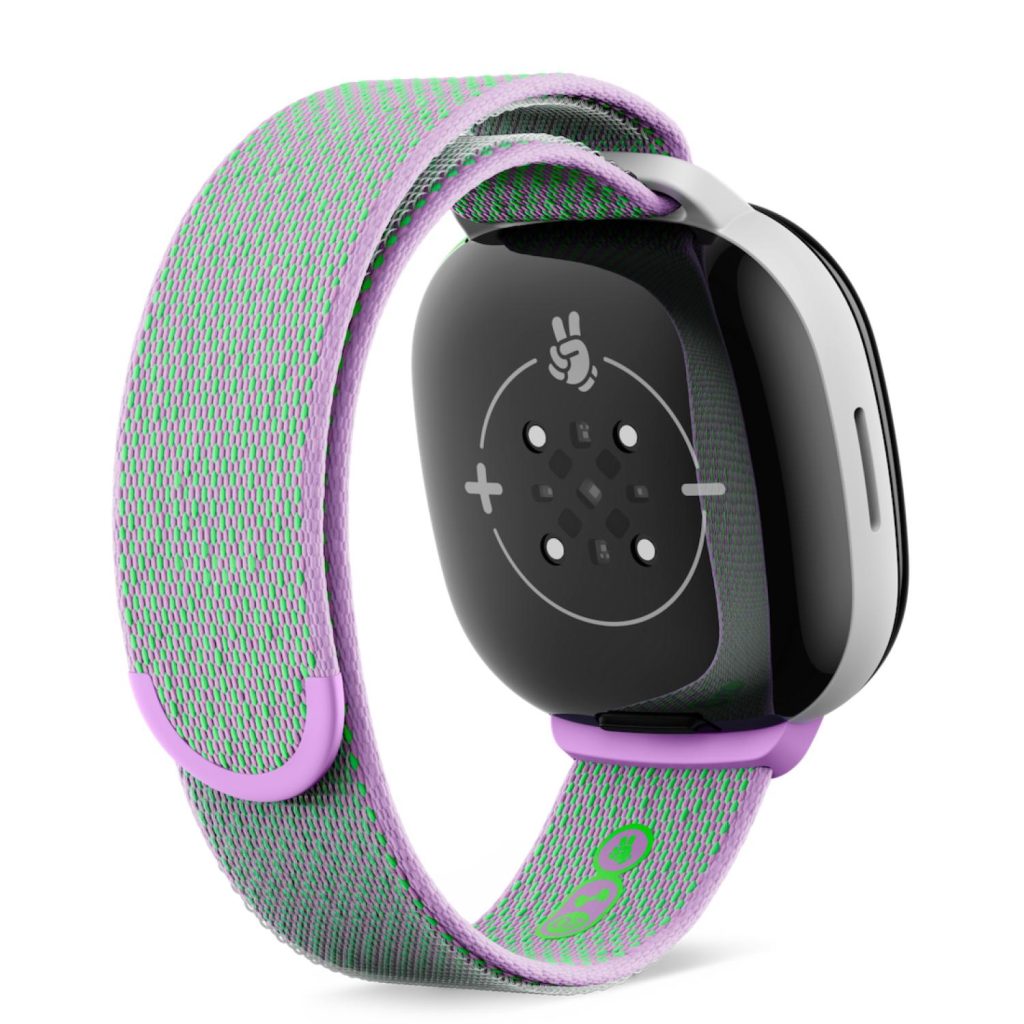
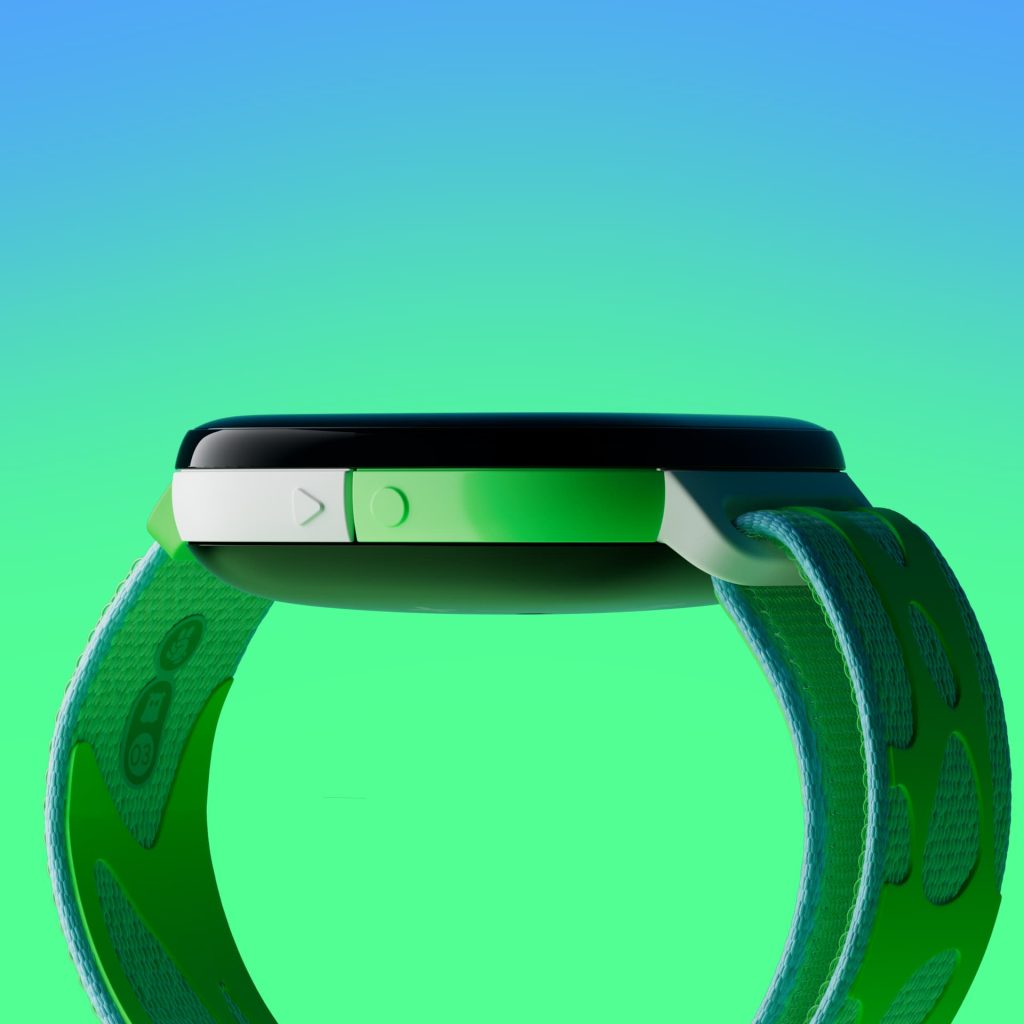
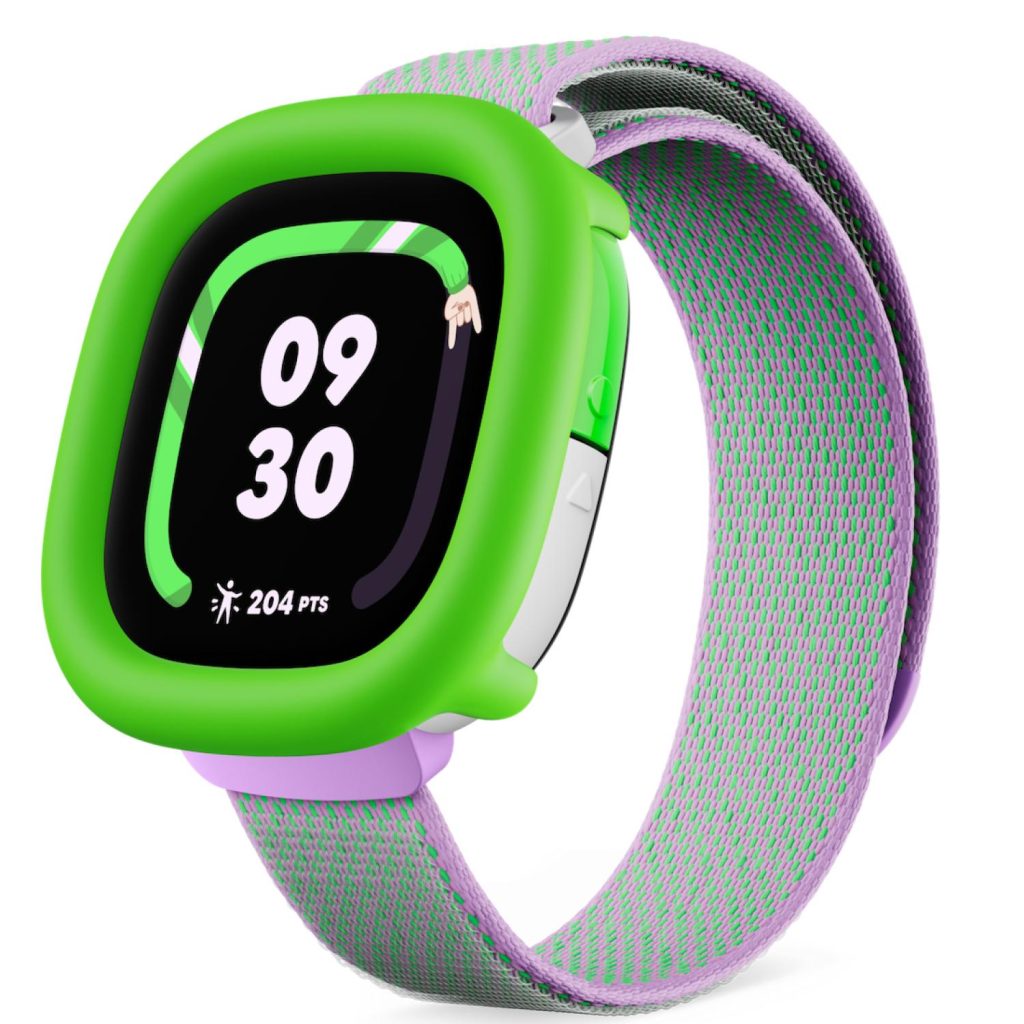
The Fitbit Ace LTE has many of the same specs as the Pixel Watch 2, including the Snapdragon W5/Qualcomm 5100, 2GB of RAM, 32GB of storage, a microphone, 5 ATM (50 meters) water resistance, and the same circular needle. charger with fast charging support.
In addition to 4G LTE (courtesy of the existing Google Fi/T-Mobile partnership), there’s 802.11 b/g/n Wi-Fi 2.4 GHz, Bluetooth 5.0, NFC, and GPS/GNSS. As a Fitbit device, it has a simplified version of the Pixel Watch 2’s optical heart rate sensor, accelerometer, gyroscope, altimeter, magnetometer, and ambient light sensor. Google has removed health sensors that kids don’t need, like the ECG app on the Pixel Watch is already 22+.
| Pixel Watch 2 | Fitbit Ace LTE |
| 320 ppi AMOLED | 333 ppi OLED |
| Gorilla Glass 5 | Gorilla Glass 3 |
| 24 hours with the screen always on | 16+ hours with gaming/LTE off, AOD |
| 306 mAh | 328 mAh |
| 30 minutes to 50% 43 minutes to 80% 75 minutes to 100% |
30 minutes to 60% (11 hours) 70 minutes to 100% (16+ hours) |
| Housing: 100% recycled aluminum | Housing: plastic, stainless steel, glass and recycled materials |
| $399.99 | $229.95 + subscription |
Games + fitness
To play the games, which are accessed from the bottom “triangle” button on the right edge, children must move. For example, you might not be able to play the next level/chapter until you get more activities, and Google cheekily calls this “interval-based gameplay”.
Eejis are adaptable creatures that feed off of daily activities — the more kids reach their movement goals, the healthier and happier their Eejis are.
As they progress and complete daily activities, kids earn arcade tickets to customize their eejie character with new clothes and items to decorate their “home in Bit Valley, the birthplace of eejie” (yes, like “Animal Crossing”).


The titles in Fitbit Arcade are powered by the Unity engine and take full advantage of the available hardware. For example, there is a fishing game called “Smokey Lake” where your hand becomes a pole that vibrates when you catch something. You raise your hand to wrap it back up. Another title called “Pollo 11” involves flicking your wrist to navigate a “chicken in a bathtub hurtling through space.” In addition to gesture-based gameplay, there are also puzzle-like challenges. New games will be added every few months.
Adults can limit games during a certain time with “School Time”.
All available watch faces feature a “Noodle” — which can be a snake, skeleton or other themed character — an activity ring to track their daily movement goal, which takes intensity into account. For example, 90 points is about 45 minutes of moderate to vigorous activity.
Google research has developed a new movement algorithm “that better and more accurately measures children’s physical activity throughout the day.” Experience accounts for overexertion, while goals are all or nothing.
There’s a large cutout for the speaker on the left edge, and at the bottom is the only strap connector that will be familiar to Versa/Sense owners. A loop is permanently attached to the upper edge. Fitbit Ace LTE recognizes which bands are connected thanks to a patented connection mechanism inspired by old Nintendo cartridges. This loads new content that can be used to customize their eejie.

There are currently six bands with fun names like Strange Arcade, Moovin’, Spooky Pubs, Glitterbomb Skate, Camp Nightmare and Courtside. There will be more to come.
Smart watch features + mobile app
On the right edge you will find two buttons that take up the entire edge. The top one is marked with a circle that opens the screen to access communication features, an alarm clock, activity statistics and other smartwatch-like features. Tap-to-pay in Google Wallet will be rolled out in “a few months,” and parents will be able to set up pocket money and receive real-time notifications about spending.


Ace LTE allows a child to text, call and send voice memos — using an IP-based backend — to their parents from their wrist. Parents receive and send messages, as well as see their Move Goal progress for the month, using the Fitbit Ace app available on Android and iOS. A child can have up to 20 approved contacts to call/text on the watch.
Parents can see where their children are in the Ace app, and this location data is deleted after 24 hours. Privacy and data minimization are big issues, and Ace app activity history is “deleted after a maximum of 35 days.”
The $229.95 Fitbit Ace LTE is available for pre-order today at the Google Store and Amazon, with general availability on June 5. More retailers will follow. It is available in Spicy Pebble (green) with the Moovin’ Band or Mild Pebble (dark gray) with the Strange Arcade Band.
At launch (until August 31st) you can get 50% off Fitbit Ace Pass and a free strap. Otherwise, it’s $119.99 a year or $9.99 every month for LTE services (messaging, calling, and location sharing), Bit Valley, and Fitbit Arcade games.

FTC: We use automatic affiliate links for profit. More.